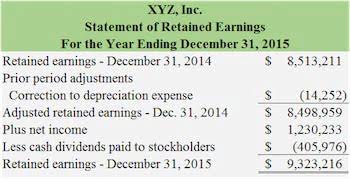Multi-Step Income Statement An In-Depth Financial Reporting Guide

By breaking down revenues and expenses into more detailed categories, businesses can better assess which areas are driving profitability and which are incurring costs. This detailed analysis aids in making informed decisions about where to allocate resources, how to cut costs, and where potential growth opportunities lie. A multi-step income statement not only provides detailed insights into a company’s profitability but also highlights key areas such as gross profit, operating income, and non-operating activities. By analyzing these components, stakeholders can make more informed decisions regarding operational efficiency, cost control, and investment strategies.
Everything to Run Your Business
Here’s an example of a single-step income statement from fictional company XYZ. Here’s an example of a multi-step income statement for fictional company ABC. Generally Accepted Accounting Principles (GAAP) gives public companies the option of issuing a multi-step or single-step income statement, depending on how they are structured. They use competitors’ P&L to gauge how well other companies are doing in their space and whether or not they should enter new markets and try to compete with other companies. External users like investors and creditors, on the other hand, are people outside of the company who have Budgeting for Nonprofits no source of financial information about the company except published reports. Investors want to know how profitable a company is and whether it will grow and become more profitable in the future.
- However, the choice of the format depends on the type of company, its rules, regulations and needs.
- This means that CBS has a margin of 39% to cover operating expenses and profit.
- Inventory valuation methods (FIFO, LIFO, Weighted Average) directly impact COGS.
- If you’re new to preparing income statements or unsure how to structure it, we have a pre-made free income statement template that you can use to simplify the process.
- A multi-step income statement can demonstrate a company’s operational strength independently of other financial factors, assisting in decision-making for potential lenders or investors.
- The other core financial statements are the balance sheet and cash flow statement.
How Does the Multi-Step Income Statement Relate to the Balance Sheet and Cash Flow Statement?
Net income is the final profit of the company after all revenues and expenses, including taxes, have been accounted for. Income before taxes is calculated by adding the operating income and the net non-operating income/expenses. Now, calculate income before income taxes by adding other revenues to operating income and subtracting other expenses. Other income and expenses like interest, lawsuit settlements, extraordinary items, and gains or losses from investments are also listed in this section.
Single-Step Income Statements in Depth

The single-step statement simply subtracts total expenses from total revenues, obscuring these crucial distinctions. A multi step income statement is a company’s financial statement in a format presenting revenues, costs, and expenses for a specific reporting period. It provides a more detailed breakdown of expenses than a single-step income statement and uses a variety of equations to determine the net income of a business. After calculating the gross profit, the next step in preparing a multi-step income statement is to account for operating expenses. This step is crucial for determining the operating income, which reflects the profit generated from a company’s core business activities. For businesses, a multi-step income statement is crucial because it provides a nuanced view of financial health and operational efficiency.
- The company’s management might shift the expenses from the cost of goods sold to the operations to improve their margins artificially.
- The header of your multi-step income statement conveys important information to readers.
- A multi-step income statement is invaluable for its ability to separate operating from non-operating activities, providing a nuanced view of a company’s financial performance.
- The result after deducting tax expenses from income before taxes will give you the net income, which is the bottom line figure indicating the company’s profitability for the period.
- In the revenue section, you should be able to view the company’s sales and net sales.
- By analyzing these areas, management can take targeted actions to improve profitability.
Revealing gross profit separately offers valuable insight into how profitable a company’s primary offerings are before accounting for other operational costs. This can help in identifying potential inefficiencies in production or procurement. One of the primary errors in financial statement preparation is overlooking or double-counting income and expenses. Higher net income indicates a profitable and potentially growing company, while lower net income may signal financial challenges. Net income is also the figure that is often used to calculate earnings per share (EPS) for public companies, serving as a key metric for investors to assess the company’s financial strength and profitability. Operating margin shows the percentage of revenue that remains after covering operating expenses.

Gross profit is calculated by subtracting cost of goods sold from net sales. Operating income is calculated by subtracting operating expenses from the gross profit. A multi-step statement is an income statement prepared to report a company’s sales and revenue, expenses and overall profit or loss for any given period. It is a detailed report unlike the single-step income statement and utilizes multiple accounting equations to calculate net profit for a business. These are advantages or pros compared to the single-step income statement format.
Let’s compile all multi step income statement these steps into a comprehensive example to create a multi-step income statement. Net sales represent the revenue from the sale of goods or services, after deducting returns, allowances, and discounts. However, the choice of the format depends on the type of company, its rules, regulations and needs. It should also take into consideration the requirements and preference of users who will refer to the statements for making financial decisions. So, we get various details of the advantage of a multi-step income statement from the above points.
Are Multi-Step Income Statements mandatory for companies?
The final step in preparing a multi-step income statement is calculating the net income, which represents the total earnings of the company after all expenses, including taxes, have been deducted. This step is vital as it provides the bottom line, indicating the company’s profitability over the accounting period. Both selling and administrative expenses are added together for computing total operating expenses.
- The gain does not relate to the company’s core business activities, so it is listed in the non-operating section of the income statement.
- The non-operating section includes other income or expenses like interest or insurance proceeds.
- The gain may be a one-time item such as a winning lawsuit or insurance settlement.
- The structured approach facilitates year-on-year and peer-to-peer comparisons.
What Businesses Use Multi-Step Income Statements?

Total income before taxes is a critical figure as it shows the company’s earnings before the impact of tax obligations. It helps in assessing the overall profitability and efficiency of the company, considering all income sources and expenses, not just those from regular business operations. This comprehensive income figure sets the stage for the final step in the income statement preparation, which involves calculating the net income after taxes. After gathering all necessary financial data, the next step is to categorize these transactions into retained earnings operating and non-operating activities. This categorization is fundamental in a multi-step income statement because it distinguishes between the core business activities and other ancillary financial events.
